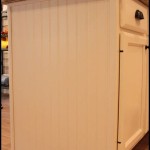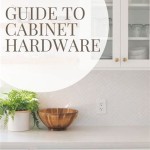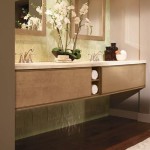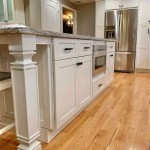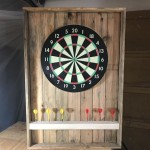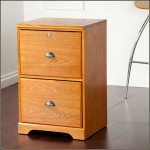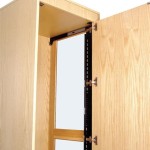How To Get Sticky Grease Off Wood Cabinets
Wood cabinets, particularly those located near stoves and cooking areas, are susceptible to accumulating sticky grease. This residue not only detracts from the aesthetic appeal of the cabinets but also attracts dust and other airborne particles, creating a stubborn and unsightly mess. Effective grease removal requires a systematic approach, utilizing appropriate cleaning agents and techniques to avoid damaging the wood finish.
Understanding the nature of the grease buildup is crucial for selecting the proper cleaning method. Fresh grease is generally easier to remove than aged grease, which tends to harden and bond more strongly to the cabinet surface. Factors such as the type of wood, the finish (e.g., varnish, lacquer, paint), and the presence of textured surfaces influence the choice of cleaning solutions and application methods.
Before initiating any cleaning process, it is imperative to test the chosen cleaning solution on an inconspicuous area of the cabinet. This precautionary step helps determine the solution's compatibility with the wood finish and prevents potential discoloration, damage, or removal of the finish. A discreet spot, such as the inside of a cabinet door or the lower corner of a cabinet panel, is ideal for this purpose.
Initial Surface Preparation and Mild Cleaning Solutions
Begin by removing any loose debris, dust, or surface particles from the cabinets using a soft cloth or a brush with soft bristles. This step prevents these particles from being ground into the grease during the cleaning process, which could potentially scratch the wood surface.
For relatively fresh or light grease buildup, a mild cleaning solution is often sufficient. A readily available and effective option is a mixture of warm water and dish soap. The soap acts as a degreasing agent, lifting the grease particles from the wood surface. Use a mild dish soap, avoiding harsh detergents or abrasive cleaners that could damage the finish.
To prepare the solution, combine a small amount of dish soap (approximately one tablespoon) with a gallon of warm water. Stir the mixture gently to create a soapy solution. Avoid excessive agitation, as this can produce excessive suds that are difficult to rinse away.
Dip a soft cloth or sponge into the soapy solution, ensuring it is damp but not soaking wet. Excess water can seep into the wood, potentially causing damage or warping. Wring out the cloth thoroughly to remove any excess liquid.
Gently wipe the greasy areas of the cabinets with the damp cloth, using a circular motion. Avoid applying excessive pressure, as this could scratch the finish. Focus on small sections at a time, rinsing the cloth frequently with clean water to remove any accumulated grease and soap.
After wiping the cabinets with the soapy solution, rinse them thoroughly with a clean, damp cloth. This step is crucial for removing any soap residue, which can attract dirt and leave a dull film on the surface. Again, ensure the cloth is damp but not soaking wet to prevent water damage.
Finally, dry the cabinets completely with a clean, dry cloth. This step prevents water spots and helps to restore the luster of the wood finish. Consider using a microfiber cloth, as it is highly absorbent and gentle on delicate surfaces.
Addressing Stubborn Grease with Stronger Cleaning Agents
If the warm water and dish soap solution proves ineffective in removing stubborn or aged grease, stronger cleaning agents may be necessary. However, it is crucial to proceed with caution and to test any new cleaning solution on an inconspicuous area before applying it to the entire cabinet.
One option is to use a solution of warm water and baking soda. Baking soda is a mild abrasive that can help to loosen stubborn grease without scratching the wood finish. To prepare the solution, mix baking soda with warm water to form a paste-like consistency. The paste should be thick enough to adhere to the cabinet surface.
Apply the baking soda paste to the greasy areas of the cabinets, using a soft cloth or sponge. Gently rub the paste into the grease, using a circular motion. Allow the paste to sit on the surface for a few minutes to help loosen the grease. Avoid leaving the paste on for extended periods, as it may dry and become difficult to remove.
After a few minutes, wipe the baking soda paste away with a clean, damp cloth. Rinse the area thoroughly with clean water to remove any remaining residue. Dry the cabinets completely with a clean, dry cloth.
Another option is to use a commercially available degreaser specifically designed for use on wood surfaces. These degreasers typically contain solvents that dissolve grease and grime. Follow the manufacturer's instructions carefully when using these products, as they may require special handling or ventilation.
When using a commercial degreaser, apply it to a clean cloth or sponge and gently wipe the greasy areas of the cabinets. Avoid spraying the degreaser directly onto the cabinets, as this can cause overspray and potentially damage surrounding surfaces. Rinse the area thoroughly with clean water and dry the cabinets completely with a clean, dry cloth.
For particularly stubborn grease stains, a combination of cleaning methods may be necessary. For example, you could first try using the warm water and dish soap solution to remove as much grease as possible. Then, you could follow up with the baking soda paste or a commercial degreaser to remove any remaining residue.
Preventative Measures and Ongoing Maintenance
The best way to keep wood cabinets clean and free of grease is to prevent buildup from occurring in the first place. Regular cleaning and preventative measures can significantly reduce the need for intensive cleaning sessions.
Wipe down the cabinets regularly with a damp cloth to remove any grease splatters or spills immediately after they occur. This prevents the grease from hardening and bonding to the surface, making it much easier to remove.
Install a range hood above the stove to capture grease and other airborne particles during cooking. Ensure the range hood is properly vented to the outside to effectively remove these particles from the kitchen.
Use splatter screens when cooking to prevent grease from splattering onto the cabinets and other surfaces. These screens are inexpensive and easy to use, and they can significantly reduce the amount of grease buildup in the kitchen.
Consider applying a protective coating to the cabinets, such as a sealant or varnish. This coating can help to prevent grease from penetrating the wood and making it easier to clean. Consult with a professional to determine the appropriate type of coating for your cabinets.
Regularly clean the range hood filters to ensure they are functioning effectively. Clogged filters can reduce the range hood's ability to capture grease and other particles, leading to increased buildup on the cabinets.
Avoid using abrasive cleaners or scouring pads on wood cabinets, as these can scratch the finish and damage the wood. Stick to gentle cleaning solutions and soft cloths or sponges.
By implementing these preventative measures and maintaining a regular cleaning schedule, you can keep your wood cabinets clean, grease-free, and looking their best for years to come. Regular maintenance is far easier than addressing years of accumulated grease.

How To Clean Kitchen Cabinets Everyday Skate

How To Quickly Clean Cabinets Remove Grease Gunk Andrea Jean

How To Clean Greasy Kitchen Cabinets Cleaning Cleaningtips
How To Clean Sticky Wood Kitchen Cabinets Quora

How To Clean Sticky Grease Off Kitchen Cabinets Ovenclean

Clean Sticky Grease Off Kitchen Cabinets In 5 Mins Or Less Torera George

How To Clean Greasy Cabinets In Your Kitchen

How To Clean Grimy Kitchen Cabinets With 2 Ingredients
How To Clean Kitchen Cabinets Without Damaging The Finish Quora

How To Clean Years Of Grease Off Wood Cabinets Tiktok
Related Posts

